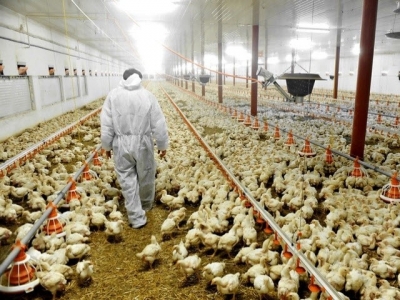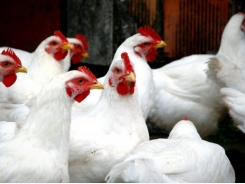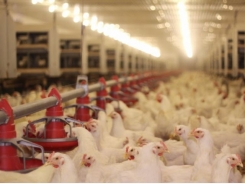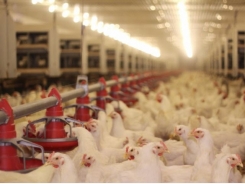Transmuting salvage grains into feed – do mealworms have the key?

Mealworms may have the ability to transmute mycotoxin-infested feed grains into usable feed ingredients for poultry diets, says researcher.
We caught up with Fiona Buchanan, animal and poultry science professor at the University of Saskatchewan to hear more about her work with yellow mealworms and mycotoxin contaminated feed ingredients.
The project started from an interest in finding an alternative outlet for wheat producers in Canada to manage wheat that had high levels of the mycotoxin contamination from Fusarium, she said. “When Fusarium started turning up, I was interested to see how could we deal with it,” she added.
“If it’s heavily infected, [farmers] bury it or burn it,” she told FeedNavigator. “They don’t’ know what to do with it.”
If a new method could be found to manage a heavily contaminated crop, and potentially provide a financial return to producers there would be interest, she said. “Even if it’s half price, that’s better than nothing – and [highly mycotoxin-contaminated grain] is something that no one knows what to do with it,” she added.
Examining that problem led Buchanan and her master’s student, Carlos Ochoa, to consider ways to transform the wheat into another feed ingredient using insects as an intermediate step, she said.
“We’ve taken a product like salvage wheat – and converted it into the mealworms, which are 50% protein and 35% fat,” she said. The nutrimental elements of mealworms make them an ingredient of interest for poultry feed, she added.
The research process
The interest in finding that alternative led to a paper done in Europe with mealworms and a different strain of Fusarium than what is seen in Canada, said Buchanan.
“The paper didn’t use fusarium graminearum they used fusarium culmorum,” she said. “And, while they managed to detoxify the DON, quite a few of the insects died – there was an increased mortality.”
To adapt the study to the situation seen in Canada, 6,000 mealworms were given one of four diets – all with varying levels of mycotoxin contamination, she said.
“We fed 1,500 mealworms per diet ranging from 0 parts per million (PPM) deoxynivalenol (DON) to 12 PPM, and we fed the larvae for a month,” she said. “We measured the DON in their bodies and it was about 0.13ppm.”
Analyzing the larvae found only a small presence of the mycotoxin, said Buchanan. Insect mortality rates were not increased by the presence of mycotoxins in the feed as they had in the other experiment with the different strain of Fusarium.
“They did detoxify the wheat,” she said. “And now we could use the mealworms to feed chickens.”
Poultry diets can include up to 5PPM DON, said Buchanan. At 0.13, the mealworms raised on salvage grains would be well within feeding limits.
“As a protein source for broiler diets it could be cheaper for the poultry industry as well,” she said. “Mealworms should be eating wheat, and chickens should be eating mealworms.”
The research group also measured the amino acid and fatty acid levels, she said. However, the article detailing all the aspects of the experiment is still in the process of being published.
Future steps
Looking forward, Buchanan is now working on a related project – feeding the salvage-grain raised mealworms to broiler chickens. “Other fungal infections that produce toxins are definitely also being considered,” she added.
Another potential step in the process would be to get mealworms approved for use as an ingredient in poultry feed in Canada, she said.
However, the long-term goal would be to establish an insect rearing facility in Canada to manage future mycotoxin infested grains, she said. The area of interest would be the damper part of the province, near a grain cleaning plant.
Có thể bạn quan tâm
Phần mềm

Phối trộn thức ăn chăn nuôi

Pha dung dịch thủy canh

Định mức cho tôm ăn

Phối trộn phân bón NPK

Xác định tỷ lệ tôm sống

Chuyển đổi đơn vị phân bón

Xác định công suất sục khí

Chuyển đổi đơn vị tôm

Tính diện tích nhà kính

Tính thể tích ao hồ




 What is wrong with this hen?
What is wrong with this hen?  Lactic acid bacteria may boost bird production in…
Lactic acid bacteria may boost bird production in…